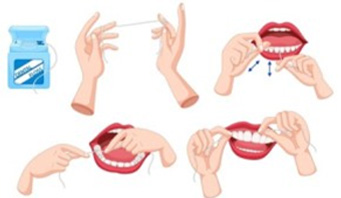
The Importance Of Flossing
We are sure you know how important flossing is already, although we do appreciate this is something so many of us easily forget to do on a regular basis. Apparently only 30% of Americans floss daily.
So, National Flossing Day on November 25th this year is all about reminding everyone about this essential oral health care routine.
We here at Boston Prosthodontics Dental Group advise all our patients to floss at least once a day. It is as vital and important as brushing your teeth and the best way to remember to floss is to form a daily habit of both brushing and flossing to provide your mouth with the best level of care.
When Was Flossing Introduced?
Firstly, a little bit of a history lesson! Flossing was first invented in the early 1800s by an American dentist. It was a cheaper option than brushing as toothbrushes were so expensive. It was however Johnson and Johnson who developed and first patented dental floss in 1898.
The floss was originally made from silk threads but by the end of the second world war nylon became more widely used and so silk was swapped for nylon flossing threads from this point on.
National Flossing Day
National Flossing Day began in the year 2000 and conveniently always falls the day after Thanksgiving – so after a fun day of feasting and treats the idea is you remember to floss your teeth the next day. This can be done before or after brushing – either works so long as it’s done correctly and continually as part of your oral hygiene care routine.
The Correct Way To Floss
- Firstly, take about 18 inches of floss and wrap it around your middle fingers and hold it between your index fingers and thumbs so you have a better grip leaving one to two inches of floss to work with.
- Holding it fairly tightly you can then glide the floss in between two of your teeth and then slide it up and down the sides of each tooth, working your way around your mouth. It’s sometimes easier to start at the back and work your way around so you don’t forget any teeth.
- Gently curve the floss against the base of your teeth to make a C shape as it reaches the gum line and move back and forth gently. Don’t snap or force the floss or it may cut or bruise your gum tissue.
- Don’t forget to floss the backsides of your back teeth. No need to be aggressive and cause bleeding gums but a firm approach will help remove food particles and plaque from the sides of your teeth that brushing can’t quite reach.
- When you have finished, and if you’ve already brushed, rinse with water or mouthwash.

Types Of Floss
There are two main types of floss to choose from:
Nylon (multifilament) floss – this is available as waxed and unwaxed and comprises of strands of nylon, which although thicker, can sometimes separate and tear. This is recommended for patients who don’t have very tight spaces between their teeth.
PTFE (monofilament) floss – this is a little more expensive but as a single filament is thinner and softer and slides easily between teeth and is less likely to break. It’s a good choice for those with tightly spaced teeth.
Both types are great at removing plaque between your teeth. There are also various floss picks and water flossing tools on the market today which are also effective and good alternatives especially if you have trouble flossing manually or have complex dental restorations for example.
So, from our team at Boston Prosthodontics Dental Group, Happy Thanksgiving and Happy Flossing Day!
If you have any questions about flossing or your dental hygiene in general or would like to schedule an appointment, just give us a call on 617 315 2185 or visit our website here for more information.
National Flossing Day, The Correct Way To Floss, Types Of Floss, When Was Flossing Introduced?
